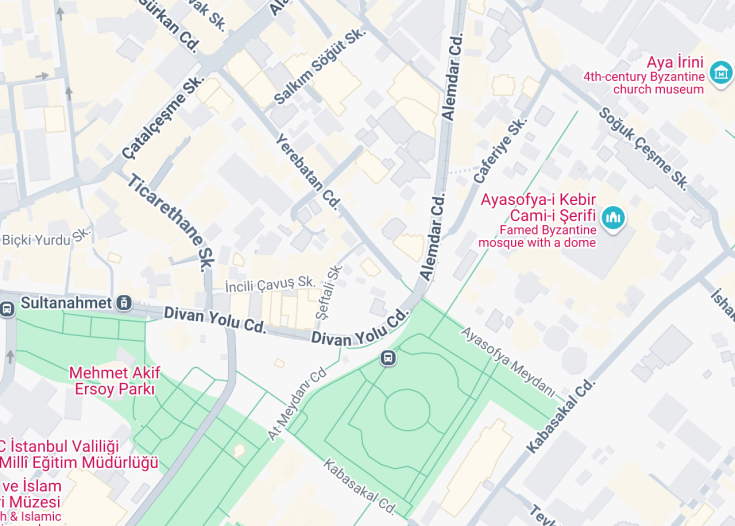The Basilica Cistern, located in the heart of Istanbul, Turkey, is one of the most stunning ancient marvels of Roman engineering. Constructed in the 6th century during the reign of Emperor Justinian I, this subterranean structure was primarily built to store water for the Great Palace and nearby buildings. Today, it stands as a testament to the sophisticated water system of the Byzantine era, featuring 336 columns arranged in 12 rows, each 9 meters high. The cistern is especially famous for its hauntingly beautiful atmosphere and the two Medusa head pillars at its base.
For an enhanced experience, visit the Basilica Cistern during the early morning or late afternoon when it’s less crowded, allowing for a more serene exploration.
Consider hiring a guide or using an audio guide to fully immerse yourself in the rich history and architectural detail of this unique historical site.
The Mystique of the Basilica Cistern
The Basilica Cistern, located in the heart of Istanbul, Turkey, is one of the most stunning historical sites in the region. Also known as Yerebatan Sarnıcı, meaning “Sunken Cistern,” this ancient structure was built in the 6th century during the reign of Byzantine Emperor Justinian I. The cistern is renowned for its atmospheric beauty, vast dimensions, and remarkably preserved architecture. It lies beneath the city of Istanbul, covering nearly 9,800 square meters and capable of holding up to 80,000 cubic meters of water. Tourists flock to this site not only to witness its ghostly beauty and architectural grandeur but also to experience the surreal ambience created by its dimly lit, water-filled corridors and the sound of dripping water. The forest of 336 marble columns, each 9 meters high, adds to its grandeur, punctuated by the presence of Medusa head sculptures that act as column bases, adding a layer of myth and intrigue. The cistern’s cool and humid atmosphere offers a refreshing retreat from Istanbul’s bustling streets, making it a fascinating destination for any history buff or lover of ancient architecture.
Exploring the Depths of History
Visiting the Basilica Cistern presents a journey back in time. One can walk along the raised wooden platforms that crisscross over the water’s surface, providing an intimate look at the architectural marvels of this underground reservoir. The main attractions within the cistern are the two enigmatic Medusa heads, which are believed to be from Roman buildings of the late antiquity period. These sculptures intrigue visitors with their historical significance and the mystery behind their origin and placement. The atmospheric lighting and the gentle sound of water dripping create a surreal experience as you traverse the cistern. Additionally, concert performances occasionally held within the cistern offer an unforgettable auditory experience, taking full advantage of the site’s incredible acoustics. The combination of history, art, and sound makes the Basilica Cistern a must-see in Istanbul.
The Medusa Stone Heads
Among the most captivating highlights of the Basilica Cistern are the Medusa stone heads. These two ancient Roman sculptures are used as bases for two of the cistern’s columns, and are oriented sideways and inverted, respectively. There are many theories regarding the unusual positioning of these heads. Some scholars suggest that this placement was intended to negate the power of Medusa’s gaze, which, according to mythology, could turn onlookers to stone. Others believe it might simply be due to the repurposing of available materials when the cistern was constructed. Regardless of the reasons, the Medusa heads are not only a center of mythological interest but also exemplify the architectural recycling practices of the past. Their eerie and intriguing presence attracts numerous photographers and history enthusiasts each year.
Discover the enchanting basilica cistern
The Basilica Cistern is ideal for historical enthusiasts and cultural explorers of all ages. It offers a mesmerizing glimpse into the ancient engineering marvels of Istanbul. Visitors can expect an atmospheric journey beneath the city, where they will encounter the stunning sight of hundreds of ancient columns submerged in water, highlighted by dramatic lighting.
When is the best time to explore the basilica cistern?
Visiting the Basilica Cistern during spring or autumn offers comfortable temperatures and fewer crowds, enhancing the serene and mysterious ambiance of the site.
Special Events to Consider
Consider visiting during the Istanbul Biennial held in the fall, which often features exhibits or installations in historic sites like the Basilica Cistern.
Understanding accessibility and limitations
While the Basilica Cistern is a site rich with history, it does have certain accessibility and logistical limitations.
Accessibility
Limitations
- Flash photography is prohibited to preserve the ambiance and integrity of the environment.
- Large bags and backpacks are not allowed inside and must be stored in lockers at the entrance.
Notes to visitors
- It’s cooler underground, so carrying a light sweater is advisable.
- The walkways can be slippery; wearing sturdy shoes is recommended.
General information
Everything you need to know for planning your visit to the Basilica Cistern.
Location
The Basilica Cistern is situated near major historical landmarks making it easily accessible to visitors exploring Istanbul’s rich history.
Address:
Alemdar Mahallesi, Yerebatan Caddesi, No:1/3, 34110 Fatih/İstanbul
Opening hours
The Basilica Cistern is open daily from 09:00 AM to 07:00 PM. Closed only during national holidays.
How to reach the basilica cistern
By Car
Driving to the Basilica Cistern is convenient, with parking available nearby.
| Route | Distance | Travel time |
|---|---|---|
| From Istanbul Airport | 20 miles (32 km) | 50 minutes |
| From Taksim Square | 3 miles (4.8 km) | 20 minutes |
By Public Transit
The subway and tram lines provide easy access with stops near the site.
- From Istanbul Airport – Metro M1A line, approx. 60 minutes to Sultanahmet Station
- From Taksim Square – Tram T1 line, approx. 25 minutes to Sultanahmet Station
Nearby attractions
While visiting the Basilica Cistern, consider these nearby attractions:
- Hagia Sophia – 500 meters (0.3 miles)
- Topkapi Palace – 600 meters (0.37 miles)
- Blue Mosque – 450 meters (0.28 miles)
Common questions
What is the historical significance of the Basilica Cistern in Turkey?
How did the Basilica Cistern get its name?
Can I take photos inside the Basilica Cistern?
What are some notable artifacts or features within the Basilica Cistern?
What myths or legends are associated with the Basilica Cistern?
Are there any preservation efforts in place for the Basilica Cistern?
What was the original purpose of building the Basilica Cistern?
How can visitors best experience the Basilica Cistern?
What architectural style is the Basilica Cistern built in?
Are there any visitor facilities at the Basilica Cistern?
How long does a typical visit to the Basilica Cistern take?
What conservation challenges does the Basilica Cistern face?

Is the Basilica Cistern in Istanbul worth visiting?
When exploring Istanbul, the Basilica Cistern emerges as a compelling attraction, notable for its rich history and unique architectural features. Originally built to store water for the Byzantine palace, the cistern is now a popular tourist destination. Visitors are often captivated by the atmospheric lighting and the sound of dripping water, which together create a serene yet eerie ambiance.
The site’s highlights include the Medusa head columns, which not only add a touch of mystery but also offer a great insight into Roman art and mythology. However, it should be noted that those with mobility issues might find the uneven pathways challenging. Despite this, the Basilica Cistern holds significant historical value and offers a unique experience, unlike any other typical tourist spot. It is a must-visit for those interested in history, architecture or seeking something different from the usual tourist attractions.










